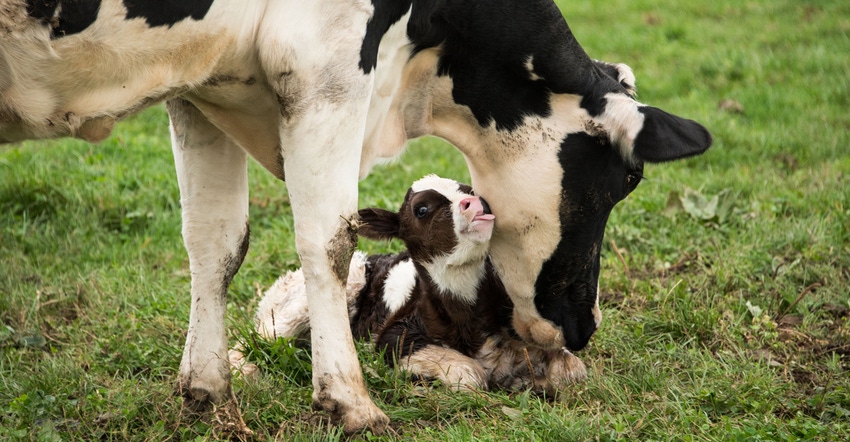
According to Dr. Robert James, Virginia Tech Dairy Science Department professor emeritus, dairy farmers need to make caring for newborn calves a top priority.
“We’re raising a lot more dairy-beef on dairy farms today, and we’re raising fewer heifer replacements, so we have a lot less wiggle room today than we did 10, 20 years ago,” James said during a recent Professional Dairy Producers Dairy Signal webinar. “We really can’t afford calf mortality. And we know this calf’s health has an impact on how much milk she is going to produce as a cow.”
James encourages dairy farmers to have goals for caring for their newborn calves, “because this is where it all begins.”
He said dairy producers should aim for:
a vigorous calf with a great appetite
a newborn that drinks 3 to 4 quarts of high-quality, clean colostrum
low mortality
a calf that achieves its growth potential
an animal that develops into a profitable cow
James said body fat reserves are as important for a calf as they are for a cow. He said it is vital for calves to be born into a clean environment and to be fed high-quality, clean colostrum from the dam, if possible, right away.
He said colostrum should be cooled in an ice bath if it’s not being fed immediately after the dam is milked. Colostrum that is allowed to sit out rapidly grows bacteria that can harm baby calves, he explained.
“Often when we take care of baby calves, we think about what’s easiest for us, not what’s best for the calf,” James said. “We have to make an investment in maternity and newborn care.”
He recommended dairy farmers do the following:
Provide a stress-free environment for the postpartum dam.
Provide an environment for the newborn that is clean and away from other cows.
Harvest clean colostrum and feed it within an hour of birth.
“This is where large herds have an advantage,” James explained. “They have someone in maternity 24/7. The cow freshens, she gets milked, and that colostrum goes to her calf immediately. If I’m milking 200 to 500 cows, I don’t have somebody in maternity 24/7, so there is a challenge.”
James recommended feeding a colostrum replacement when a dam’s colostrum isn’t immediately available. “It’s expensive, but it’s a good investment,” he said.
Colostrum is best
James cautioned that according to a new study, colostrum from a calf’s dam is best.
“Calves that get colostrum from their dam had enhanced immune development, and that showed up all the way until they freshened as 2-year-olds,” he said. “So, there is value in feeding the cow’s colostrum to the calf. But the first priority is to get clean colostrum into a calf as soon as possible.”
James said dairy farmers should compare newborn beef calves to newborn dairy calves.
“A beef calf is fed milk from its mom that transitions from colostrum to milk,” he said. “A dairy calf is fed colostrum once and then she gets milk. Maybe there is a reason to feed transition milk [milk taken one day after a cow has calved]. Calves do better on colostrum and then transition milk or two feedings of colostrum.”
James said some dairy farms have figured out how to feed transition milk to calves, and they are reaping the benefits.
“When I see a calf that gets scours or pneumonia when it is 5 to 7 days old, that comes back to maternity care, and that’s going to dog us forever,” he said. “The better they grow as calves, the more milk they are going to make.”
He acknowledged that upgrading maternity care on a farm is an investment that will take two years to see a payback. He left producers with a question to think about: “How willing are you to change?”
About the Author(s)
You May Also Like






